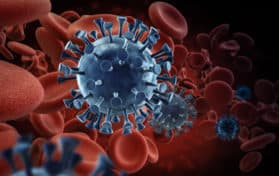
Just after Thanksgiving, news about the Omicron variant – a variant of the COVID-19 virus that was said to be a milder version of coronavirus albeit more contagious – was spreading through South Africa. Soon, even though travel bans from seven countries where the variant originated were installed, the variant appeared in the United States. Much like we had been told by South African doctors who had worked in the midst of omicron, the variant did spread rapidly, but, most cases were not severe. Now, scientists have announced that there is a mutation of the omicron strain of COVID-19, and this version is being referred to as “stealth omicron.”
What is stealth omicron?
This form of the omicron variant has been named BA.2, but media outlets have given it the nickname stealth omicron. The variant has been detected in over forty countries worldwide. It has been given the moniker “stealth” because the version possesses some genetic traits that make it more difficult to detect. Although there is not a strong consensus at this time (because so much is still unknown about the BA.2), many scientists believe it could be even more contagious than the highly transmissible original omicron variant.
While we definitely know that this version may cause a false negative should a patient be tested, we don’t know if the BA.2 virus is more severe than the original omicron. We also don’t know if the BA.2 is prevented by vaccinations.
The Chicago Department of Public Health Commissioner, Allison Arwady, says that the variant BA.2 is “raising a high level of concern,” but the latest version “has not even been classified as a variant of interest yet.” She also described BA.2 as “(not) even a new variant . . .just a slightly different flavor of the kernel.”
The original version of omicron is referred to as BA.1.
BA.2, however, has a host of mutations. Twenty of these mutations share the same spike protein as the original omicron. In addition, BA.2 has several genetic mutations that are not present in the original omicron. At present, scientists are unsure just how significant those mutations are. They are also unsure of the level of transmissiblity the BA.2 version possesses.
What areas are seeing the stealth omicron?
At least ninety-six cases of stealth omicron have been detected in the United States. A pathologist in Texas, who has identified three cases of omicron involving BA.2, says, “Thus far, we haven’t seen it start to gain ground (in the United States).”
As of this writing, the BA.2 strain appears to be more prevalent in Europe and Asia. In particular, Denmark has seen a good many cases. According to the Statens Serum Institute, a part of the Danish Ministry of Health, nearly half of all COVID-19 cases (in Denmark) during the month of January were the BA.2 version of omicron.
What do scientists know about the BA.2 version of omicron?
Right now, the BA.2 version is considered a subset of BA.1, the original omicron strain. It will only be given a Greek letter name (such as delta and omicron were named) if the version becomes a “variant of concern.”
Scientists have observed a “quick spread” of BA.2, much like the original omicron version. While scientists agree that they have seen some indications that the version may be even more contagious than the BA.1 version, they “don’t necessarily know why that is.”
Scientists in Denmark currently studying the omicron variant and its subsets have seen no real differences in hospitalizations where BA.2 is concerned. At present, scientists are more concerned regarding the effectiveness of vaccines against this version of omicron as well as its potential for successful treatment.
In addition, physicians are unsure if those who have contracted the BA.1 version may also contract BA.2. With previous variants of COVID-19, most who come down with the coronavirus do develop antibodies to the disease. However, doctors are hopeful that, in the case an individual was able to contract both BA.1 and BA.2 that a subsequent infection would be less severe than the original infection. According to Dr. Daniel Kuritzkes, an infectious disease expert at Brigham and Women’s Hospital, there is hope that both versions have enough in common so that having had BA.1 and recovering will give patients “cross-protection” against the BA.2 version. This is because the two versions appear to have enough genetically in common to provide such.
In the near future, scientists will be conducting experiments to determine if this hope is a real possibility.
Are health agencies concerned, and, if so, how serious are the concerns?
Currently, the World Health Organization has classified the omicron variant (BA.1) as a variant of concern. The agency has labeled the newer version BA.2, but, they have not given a specific variant name to the mutation. However, the WHO agreed that, because the BA.2 version is rising in case numbers in some countries, this version of omicron “should be prioritized.”
The United Kingdom Health Agency has labeled BA.2 a “variant under investigation.” The BA.1 version is more dominant in the UK as of this writing.
What makes this version more difficult to detect?
When omicron was first detected, scientists were able to distinguish the variant from delta because of an “S gene target failure.” This “genetic quirk” made omicron different from delta, but the BA.2 version of omicron does not possess the same identifying genetic characteristic. According to PCR tests, the BA.2 version looks like the delta variant.
Scientists are quick to remind the public that “it’s not that the test doesn’t detect BA.2,” but the test results “don’t look like omicron.”
How can I protect myself against BA.2?
Since it is still unknown if this version will evade vaccines, doctors are still recommending that people get vaccinated and wear a mask. They also admonish the public to avoid crowds when possible and to stay home if they feel ill.
Those who do have to be out in public are reminded to use good hygiene – wash your hands and use hand sanitizer when it’s not possible to wash one’s hands.





